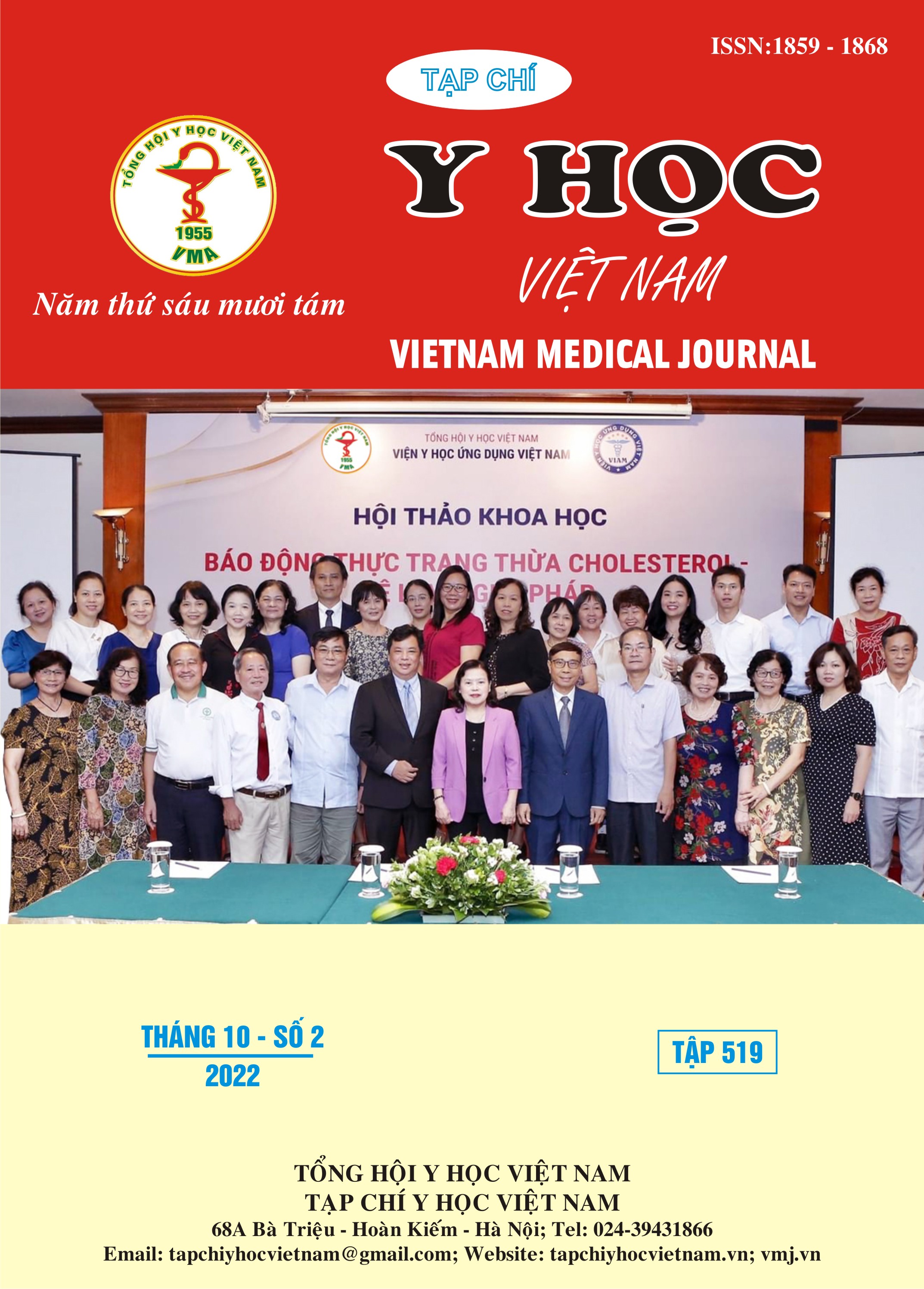CLINICAL AND PARACLINICAL CHARACTERISTICS OF PEDIATRIC CROHN’S DISEASE AT THE VIETNAM NATIONAL CHILDREN’S HOSPITAL
Main Article Content
Abstract
Children's Crohn's disease has diverse clinical manifestations in the gastrointestinal tract and extra-gastrointestinal tract, with complex laboratory, endoscopic and histopathological manifestations. Objectives: to describe clinical and paraclinical characteristics of pediatric Crohn's disease at the Vietnam National Children's Hospital. Materials and methods: a case series of 57 children diagnosed Crohn's disease from August, 2021 to July, 2022. Results: The male:female ratio of was 1,2:1. The median age of onset was 9 years. The most common clinical manifestations in the gastrointestinal tract were abdominal pain (80,7%), bloody stools (63.2%), straining (47,4%), anal lesions (47,4%). Commonly seen laboratory signs are anemia (75,4%), thrombocytopenia (64,9%), increased erythrocyte sedimentation rate (41.1%), increased CRP (63.2%) decreased blood albumin (45,6%), increased fecal calprotectin (68,4%). 100% of patients have lesions of the lower gastrointestinal tract with 91,1% have colonic lesions. 26,3% of patients had granulomas in histopathology, 52,6% had typical histopathological images with Crohn's disease. Conclusion: Children with Crohn's disease have diverse clinical and laboratory manifestations. There are no typical clinical symptoms or laboratory signs that are the gold standard for diagnosis.
Article Details
Keywords
Crohn’s disease, pediatric, clinical, paraclinical
References
2. Oliveira SB, Monteiro IM. Diagnosis and management of inflammatory bowel disease in children. BMJ. Published online May 31, 2017:j2083. doi:10.1136/bmj.j2083
3. Kim HJ, Oh SH, Kim DY, et al. Clinical Characteristics and Long-Term Outcomes of Paediatric Crohn’s Disease: A Single-Centre Experience. J Crohns Colitis. 2017;11(2):157-164. doi:10.1093/ecco-jcc/jjw146
4. Ong C, Aw MM, Liwanag MJ, Quak SH, Phua KB. Rapid rise in the incidence and clinical characteristics of pediatric inflammatory bowel disease in a South-East Asian cohort in Singapore, 1994-2015: Rising incidence of pediatric IBD. J Dig Dis.2018;19(7):395-403. doi:10.1111/1751-2980. 12641
5. Nguyễn Thị Ngọc Hồng, Nguyễn Thị Việt Hà. Đặc điểm lâm sàng và tổn thương trên nội soi của trẻ bị bệnh ruột viêm tại Bệnh viện Nhi Trung ương. Tạp Chí Nghiên Cứu Y Học. 2020;128(4):58-68.
6. Jin HY, Lim JS, Lee Y, et al. Growth, puberty, and bone health in children and adolescents with inflammatory bowel disease. BMC Pediatr. 2021;21(1):35. doi:10.1186/s12887-021-02496-4
7. Mack DR, Langton C, Markowitz J, et al. Laboratory Values for Children With Newly Diagnosed Inflammatory Bowel Disease. Pediatrics. 2007; 119(6):1113-1119. doi:10.1542/peds.2006-1865
8. de Bie CI, Paerregaard A, Kolacek S, et al. Disease Phenotype at Diagnosis in Pediatric Crohnʼs Disease: 5-year Analyses of the EUROKIDS Registry. Inflamm Bowel Dis. 2013;19(2):378-385. doi:10.1002/ibd.23008.


